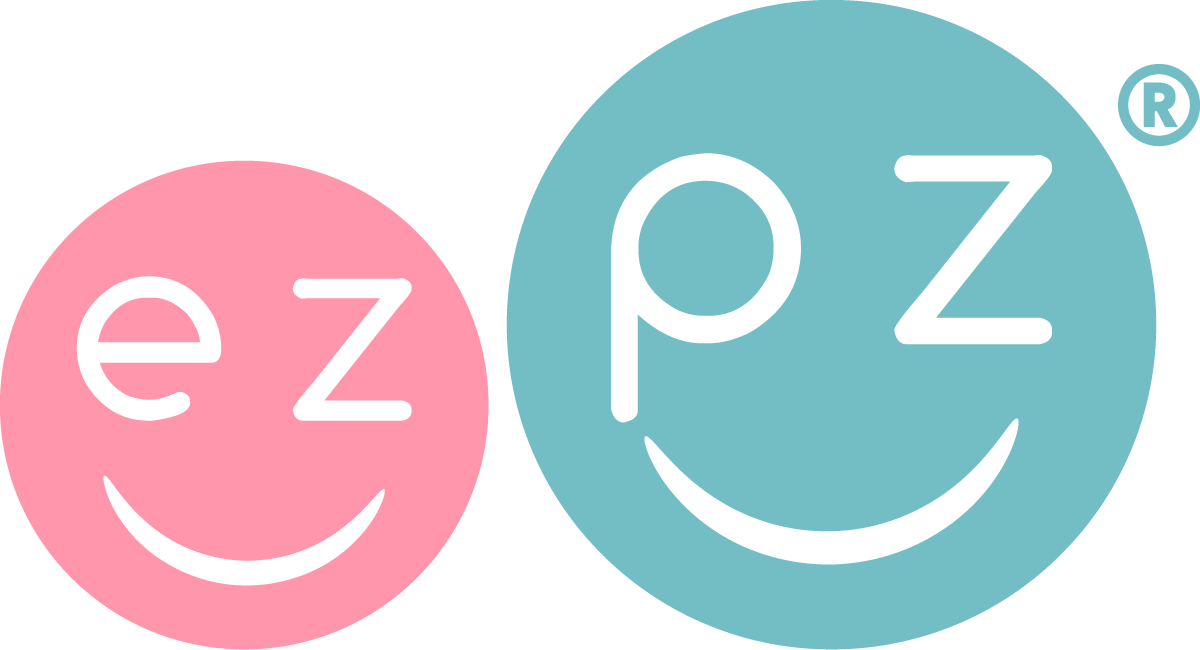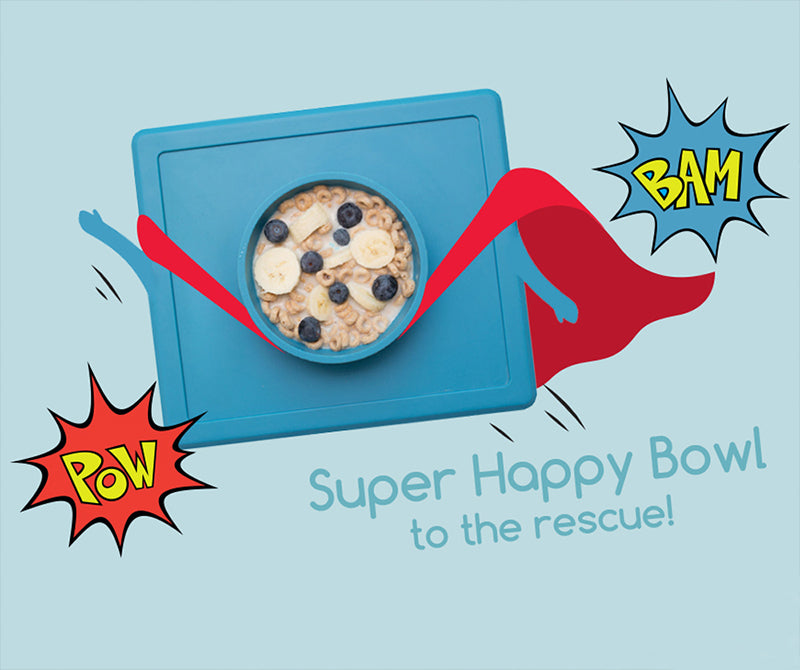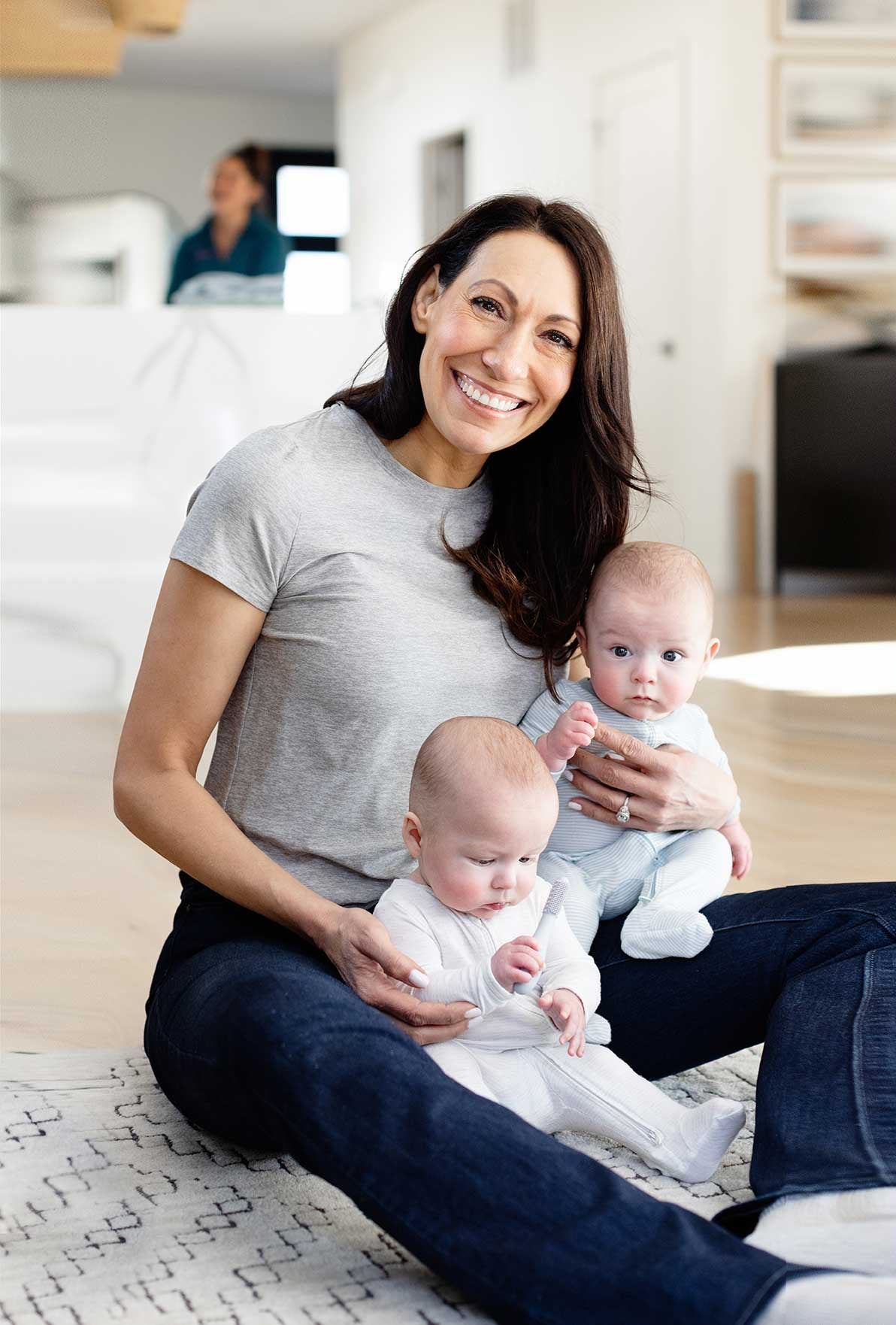Some superheroes eat independently and others need a little help from their parents, therapists and the right products! As a feeding therapist, my job is to make feeding and eating more enjoyable and efficient for the entire family. Here are my four tips for choosing a bowl and turning your toddler into a successful self-feeding superhero.
Sensory: Kids love to gum, touch and feel the utensils and dishes they use. That’s why kids love to chew on them and, to our horror, throw them like Captain America’s shield! I find that silicone bowls give kids that sensory feel they are looking for. In addition, silicone helps improve their grasp, which allows the child to use their ‘helper hand’ (non-dominant hand) to support themselves on the rim of the bowl, while they use their dominant hand to scoop food out of the bowl. The silicone structure also helps kids with tremors, poor muscle control, a sensory processing disorder or seizures to be safe from accidentally harming themselves during mealtime. It’s better than glass, metal or kryptonite, right? Ha!
Suction: In the past, I was using “adapted” bowls (bowls designed specifically for people with special needs) in feeding therapy, but these products didn’t suction after one round in the dishwasher. I was left to my own devices, which usually involved duct taping a bowl to a table (sigh!). Thank goodness the Mini Bowl and Happy Bowl were invented with a patented suction technology! The suction feature of the Happy Bowl holds the bowl in place, which provides stability and helps kids to expand their self-feeding skills and eat independently. Even older kids can benefit from the suction feature, especially when eating mixed textured foods (e.g., cereal and soups) that require more dexterity, sharper fine motor skills and, dare we say, superpowers!
Portion: When I teach parents about appropriate portion sizes for their children, I explain how critical it is for parents to know the portion size of the bowl they serve. Knowing how much we are serving our children and how much they are eating is a powerful tool to ensure that your family has healthy eating habits. The Mini Bowl, for example, is portion-sized at 8 ounces and the Happy Bowl is portion-sized at 12 ounces. By knowing the portion size, a parent or therapist can quickly measure how much a child has consumed. This nutritional information helps a spectrum of kids; from those who are a bit picky, to others diagnosed with failure to thrive, to children on g-tubes, to kids who have childhood obesity or diabetes. Every child learning how to eat is a superhero in disguise!
Color: The right color in dish ware can increase a child’s attention to their food and allow them to focus more during mealtime. Research shows that if we can get kids to stay at the table longer, they are more likely to eat more fruits and vegetables. So, if your child’s favorite color is Wonder Woman red or Superman blue, you know what color of bowl to pick!
Every child needs to have a bowl to successfully eat soup, cereal, spaghetti, ice cream and, of course, mac and cheese. We can’t wait to hear about the little superhero in your life and the super abilities they gained from eating with the Happy Bowl. #ezpzfun #happybowl #superhero



